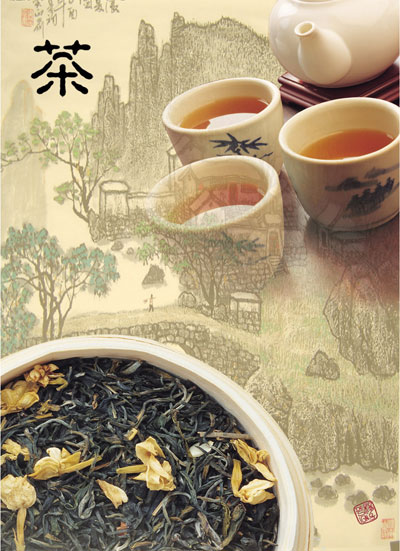
Is it Chinese? Or from other Language?
"CHA", "TAY", "TEA"
The Chinese character "TEA" written with Chinese calligraphic brush.
In Chinese dialects, pronunciation of "tea" is divided into two classes based on phonetic similarity. In mandarin, "tea" is "CHA"; in Xiamenese (FuJian province), "tea" is "TAY".
CHA and TAY had different time and route spreading out to the rest of the world.
It dates back to the 5th century that CHA went beyond the Chinese border. Japanese simply use the Chinese character of tea (see insert on right) for tea. In Persia, tea was CHA and then later evolved into CHAI in Arabic, CHAY in Turkish and CHAI in Russian. Tea was also brought to India, Sri Lanka, Pakistan, and Bangladesh where it's called CHA.
TAY started spreading later than CHA but had reached much further than CHA did. Near the end of the Ming Dynasty, 1644 AD, British merchants set up trading posts in Xiamen and came into contact with Chinese tea. What the Xiamen people called TAY, the British spelled as TEA. "Tea" has later become wildly accepted by the English-speaking world. The French THE and German TEE are also decedents of TAY.
